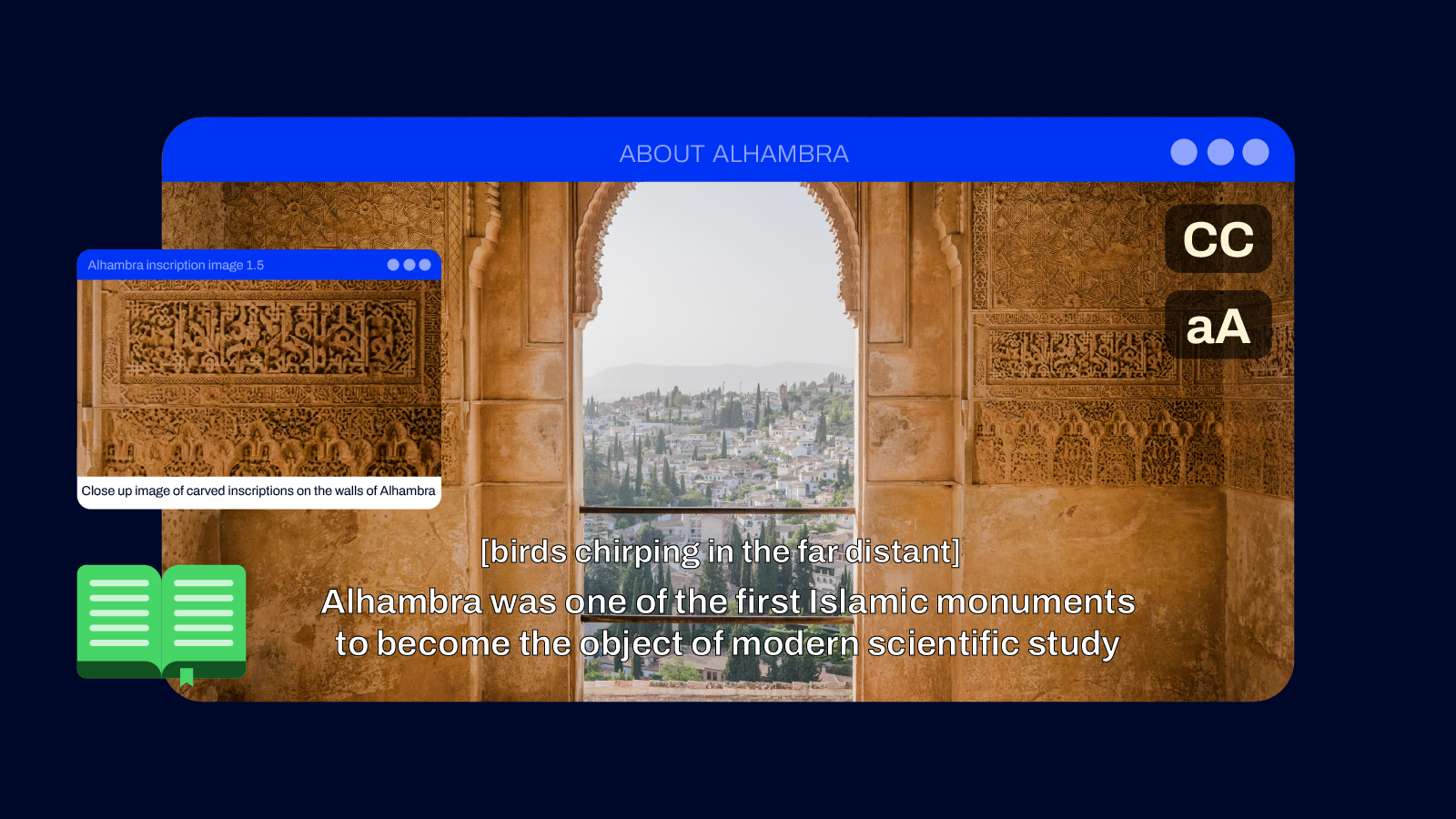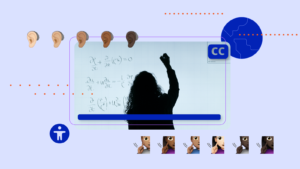In recent years, e-learning has become an indispensable tool for educators around the world. The convenience, flexibility, and accessibility it offers have revolutionized the way we teach and learn. However, for e-learning to be truly effective, educators must continuously seek ways to improve their virtual classrooms. One often-overlooked aspect of this improvement is the inclusion of transcripts, closed captions, and subtitles in lesson materials, especially in video lessons. We will explore the benefits of integrating these features and how they can significantly enhance the e-learning experience for students.
1. Accessibility for All
One of the primary advantages of adding transcripts, closed captions, and subtitles to e-learning content is improved accessibility. Not all students have the same learning style or ability, and catering to diverse needs is key to effective teaching. Transcripts provide a written version of the spoken content, which can be invaluable for students with hearing impairments. Closed captions and subtitles, on the other hand, benefit those who may have difficulty understanding accents or pronunciations, non-native English speakers, and students who prefer a visual reinforcement of the material. By offering multiple avenues for comprehension, educators ensure that no one is left behind.
2. Enhanced Comprehension
Incorporating transcripts and captions promotes better comprehension, as students can read along while listening to the audio or watching the video. This dual sensory approach can aid in reinforcing the information and concepts being presented. It also allows students to clarify any misunderstood or misheard words, thereby improving overall retention.
3. Improved Note-Taking
In traditional classrooms, students often take notes to aid their understanding and revision. The same concept applies to e-Learning. With transcripts and captions readily available, students can focus more on the content being presented, rather than frantic note-taking. They can absorb the material at their own pace, and forgo the anxiety of missing crucial information. This can lead to better content retention and more effective study sessions.
4. Language E-Learning Support
For educators teaching a language, transcripts, closed captions, and subtitles are invaluable tools. Language learners can use these features to compare the spoken language with the written form, understand context, and learn vocabulary in context. This can help accelerate language acquisition and comprehension, making eLearning an even more effective platform for learning new languages.
5. Learning Flexibility
Transcripts, captions, and subtitles provide learning flexibility by allowing students to customize their learning experience. They can choose to read, listen, or do both simultaneously. This adaptability caters to different learning preferences and paces, ultimately making eLearning materials more accessible and engaging.
6. Searchable Content
Transcripts provide a searchable text format of the lesson’s content, which can be a game-changer when students need to revisit specific information. Instead of scrolling through the entire video, students can simply search for keywords in the transcript, making it easier to locate and review essential concepts.
7. Accommodating Different E-Learning Styles
Everyone has a unique learning style, and some students are more visual or textual learners than auditory ones. By providing transcripts and captions, educators accommodate these diverse learning styles, ensuring that the content is accessible and digestible for all students.
8. Compliance with Regulations
In some regions, educational institutions are required by law to provide accessible content for students with disabilities. Adding transcripts and captions to eLearning materials helps institutions meet these legal requirements while fostering an inclusive learning environment.
In conclusion, enhancing eLearning by including transcripts, closed captions, and subtitles in video lessons and class materials is a simple yet highly effective strategy. This approach ensures that all students, regardless of their learning style or abilities, can access, comprehend, and engage with the content more effectively. It caters to the diverse needs of today’s learners and is a testament to the inclusivity and adaptability of eLearning. So, educators, consider implementing these features in your eLearning materials to create a more accessible and enriching learning experience for your students.
If you’re from an education institution looking for professionals to transcribe your classes and add subtitles to your video materials, try out Nuvo. Nuvo provides the best subtitling and transcription services tailored for your needs. With a network of over 3,000 language professionals. They are also supported by AI, drastically reducing the cost and turnaround time.
Not interested in engaging professionals? Generate automatic transcripts and subtitles with اوریس اے آئی. Auris AI is free for the 30 minutes, and offers one of the most affordable pricing plans, with additional discounts for educators.






